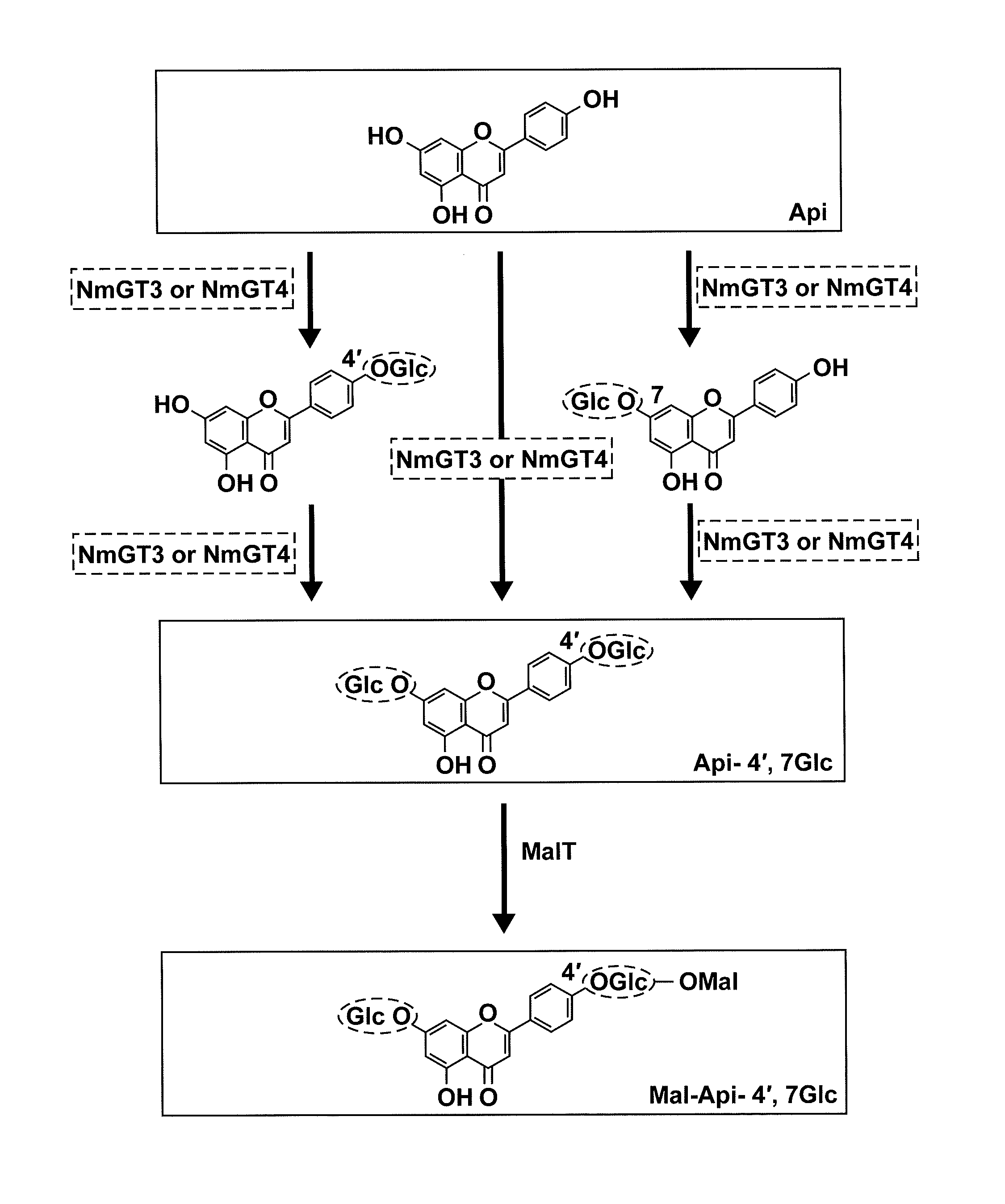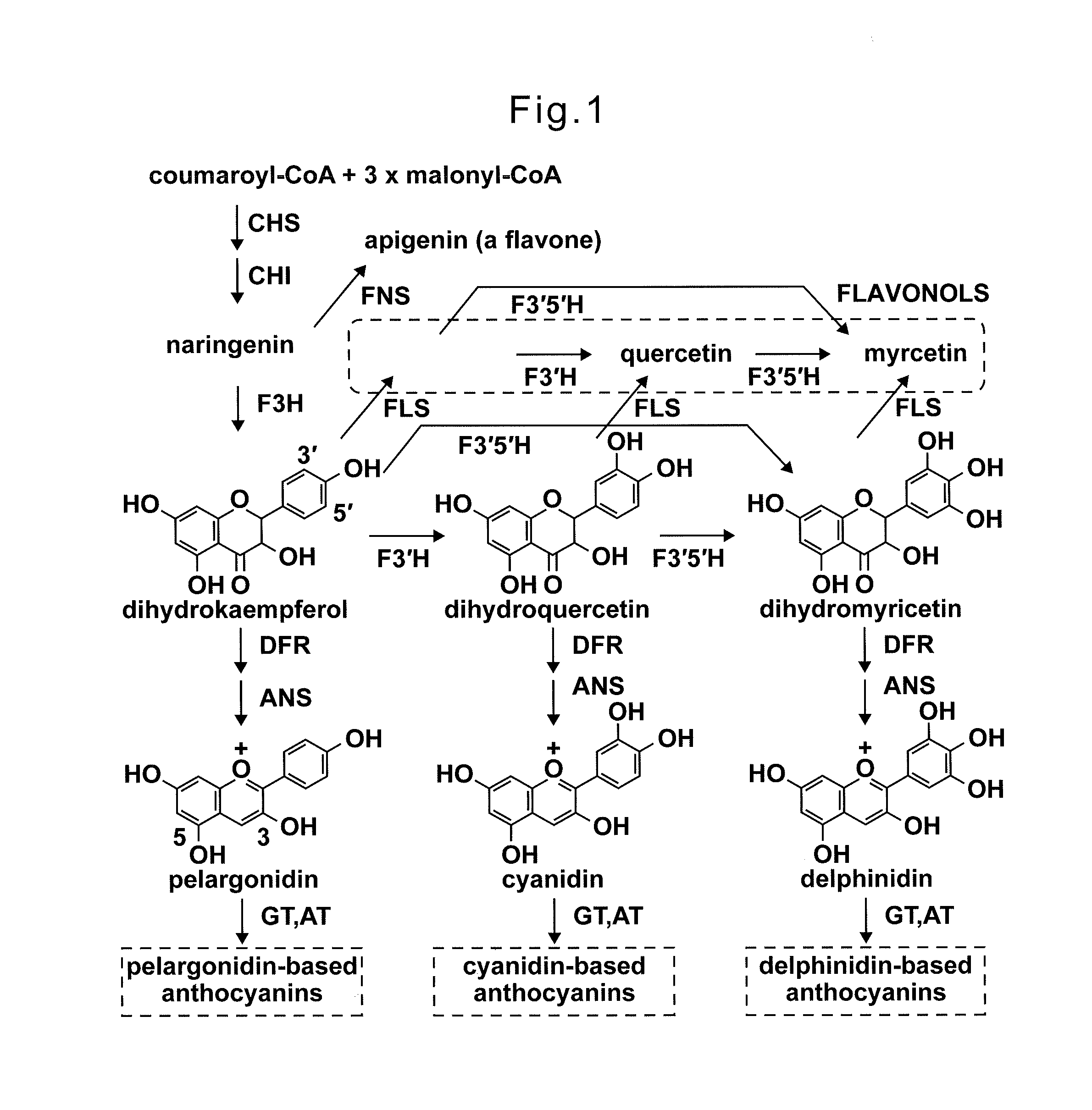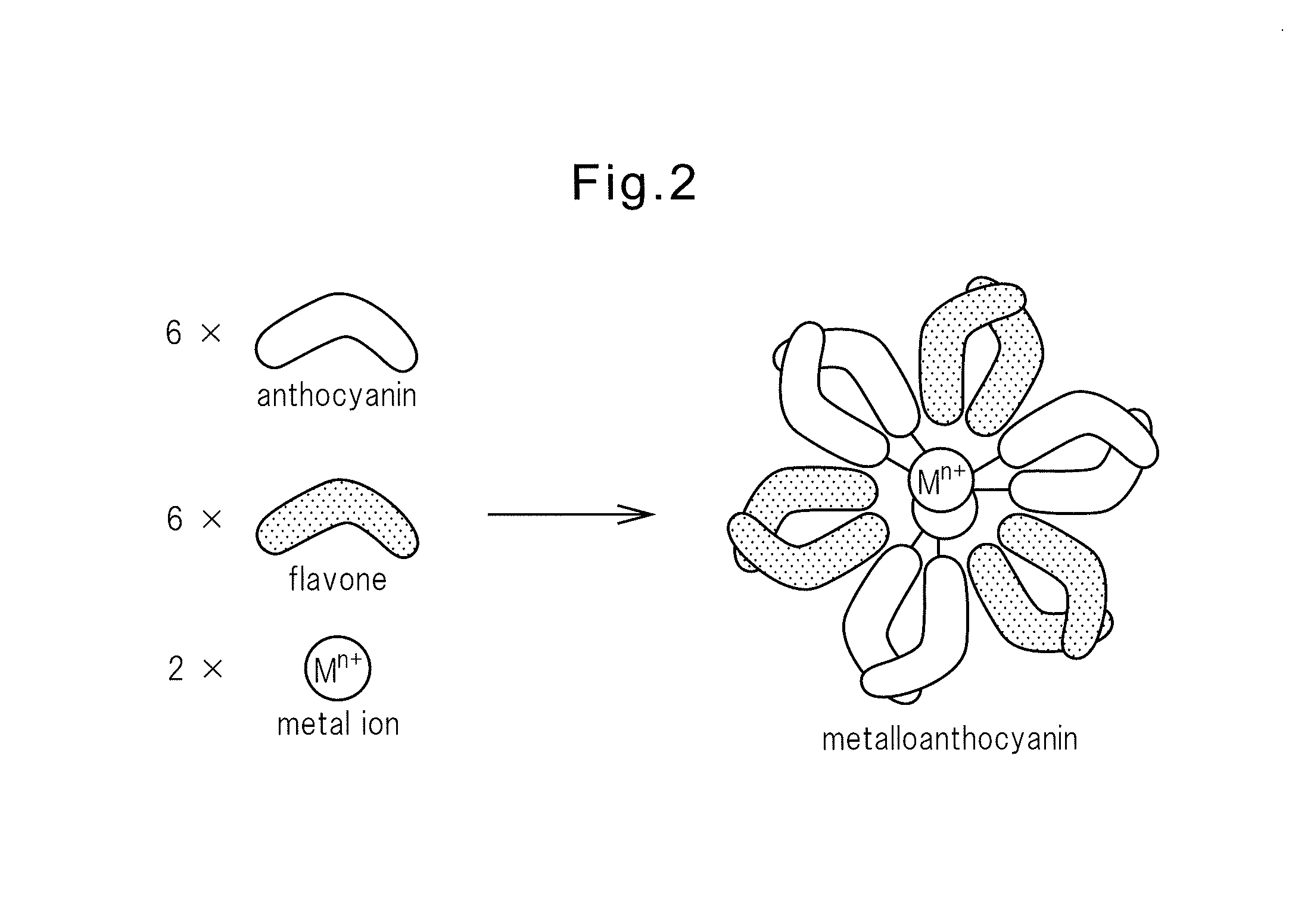Novel glycosyltransferase gene and use thereof
- Summary
- Abstract
- Description
- Claims
- Application Information
AI Technical Summary
Benefits of technology
Problems solved by technology
Method used
Image
Examples
example 1
Detection of an Activity of Transferring a Glycosyl to Hydroxyl Groups at the 4′-Position and 7-Position of a Flavone in Nemophila Petals
[0122]Petals of Nemophila menziessi were collected at each development stage defined below, frozen in liquid nitrogen, and stored in a −80° C. freezer:
[0123]Stage 1: Uncolored, hard and folded buds (about 2-5 mm):
[0124]Stage 2: Colored, hard and folded buds (about 2-5 mm):
[0125]Stage 3: Colored and folded buds, and sepals are about to unfold (about 5-10 mm);
[0126]Stage 4: Buds of which petals are about to unfold (about 10-15 mm);
[0127]Stage 5: Completely unfolded flowers
Nemophila Petal Extract>
[0128]In petals at stages 1 and 2 before the biosynthesis of anthocyanin, the detection of the glycosyltransferase activity of a flavone can be expected. Thus, using petals at stages 1 and 2, petal extracts were prepared. 500 mg of petal samples (250 mg each of samples of stages 1 and 2 that had been stored at −80° C.) were mashed in a mortar while cooling in...
example 2
Determination of the Retention Time and Absorption Maximum of Apigenin 4′-Glucoside
[0131]In order to clarify the biosynthetic pathway of flavone 4′,7-diglucoside, the retention time and absorption maximum of apigenin 4′-glucoside were determined.
[0132]During the process of biosynthesis of apigenin 4′,7-diglucoside in Example 1, apigenin 4′-glucoside and apigenin 7-glucoside should be biosynthesized as intermediate products (see FIG. 8). In the result of analysis of Example 1, the appearance of peaks of a product other than apigenin 7-glucoside and apigenin 4′,7-diglucoside that are samples was expected.
[0133]As a result, a flavone exhibiting a retention time close to that of apigenin 7-glucoside was found to have been biosynthesized, which was judged to be apigenin 4′-glucoside (see FIG. 7). Thus the retention time and absorption maximum of apigenin 4′-glucoside was determined.
example 3
Acquisition of Candidate Genes of a Gene Encoding a Protein Having an Activity of Transferring a Glycosyl to Both of the Hydroxyl Groups at the 4′- and 7-Positions of a Flavone
[0134]Using Plant RNAeasy Kit (QIAGEN), total RNA was isolated from the petals of stages 1 and 2 of Nemophila according to a protocol recommended by the manufacturer.
Nemophila Petals>
[0135]After 30 μg of total RNA derived from Nemophila petals was subjected to a reverse transcription reaction, a uniform cDNA library was generated. The library generated was amplified clone by clone by an emulsion PCR, and then the base sequence was determined using the Genome Sequencer FLX (Roche Diagnostics Japan). The sequence data obtained were translated into amino acid sequences, and the sequences exhibiting homology with the amino acid sequence of anthocyanin 3′-glycosyltransferase of gentian were extracted. These sequences were assembled to obtain candidate genes encoding the glycosyltransferase.
PUM
| Property | Measurement | Unit |
|---|---|---|
| pH | aaaaa | aaaaa |
| temperature | aaaaa | aaaaa |
| pH | aaaaa | aaaaa |
Abstract
Description
Claims
Application Information
 Login to View More
Login to View More - R&D
- Intellectual Property
- Life Sciences
- Materials
- Tech Scout
- Unparalleled Data Quality
- Higher Quality Content
- 60% Fewer Hallucinations
Browse by: Latest US Patents, China's latest patents, Technical Efficacy Thesaurus, Application Domain, Technology Topic, Popular Technical Reports.
© 2025 PatSnap. All rights reserved.Legal|Privacy policy|Modern Slavery Act Transparency Statement|Sitemap|About US| Contact US: help@patsnap.com



